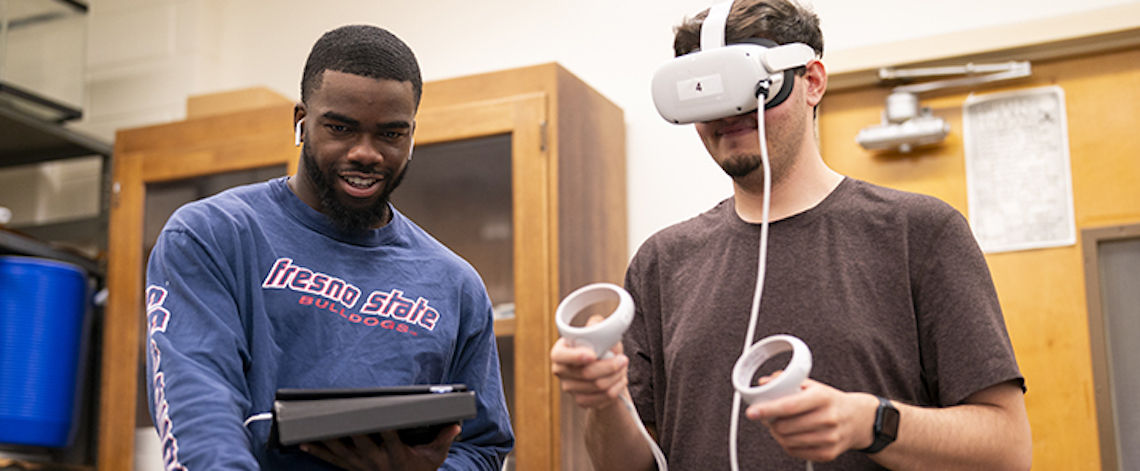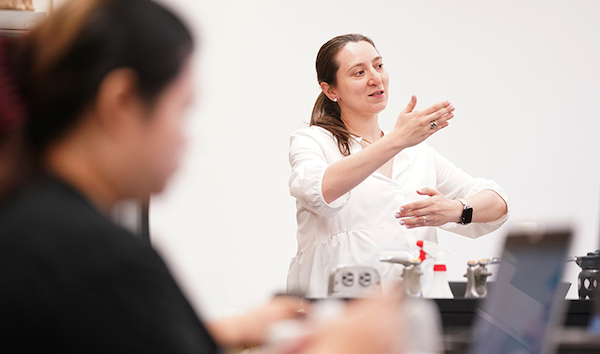
Students try out the new virtual reality tour of the brain offered at Fresno State. Fresno State news image
Written by Ben Hensley
From the cockpit of a Formula 1 race car to climbing Everest, virtual reality technology has expanded human imagination into a nearly limitless potential, allowing people to go places and do things they’d never have the opportunity to in real life.
Fresno State biology professor Dr. Anahit Hovhannisyan has taken the medium of virtual reality to an educational level, leveraging the technology to help her students visualize one of the most complex organs in the human body — the brain.
“Memorizing structures and learning their locations in anatomy classes is mostly related to memorization and not much of logical implementation,” Hovhannisyan said. “I was looking for ways of how I can make my students get the logical component and learn anatomical structures easier.”

Hovhannisyan, who has taught at the university for six years, was part of the Lyles College of Engineering that helped train faculty to implement the use of VR in their courses. She said that, despite some of the initial disorientating effects (which can temporarily cause mild eye strain, dizziness and nausea known as “cybersickness”) the tool has been met with positive feedback, with some students even commenting that the allotted class time to explore the interactive reality.
“They weren’t just coming and making pictures,” Hovhannisyan said. “They wanted to learn and this indicated that implementing this component made them want to learn.”
Hovhannisyan secured funding from the College of Science and Mathematics’ dean’s office for a program — syGlass — which she uses in her class; students learn how to use the VR headset and navigate the custom-designed application with different data sets.
Hovhannisyan, who had been searching for alternate methods of education — including interacting with a real human brain — saw syGlass VR demonstrate their technology at a Society for Neuroscience conference, and embraced the concept, adding that, similar to people’s hesitation to accept new technology, like the calculator, embracing technological opportunities can be very rewarding in the educational field.
“We use it as a tool and the same can be said with technological improvements and artificial intelligence tools,” Hovhannisyan said. “All of those things need to be part of educating so students can use them as tools to improve their learning process and help them to learn easier








